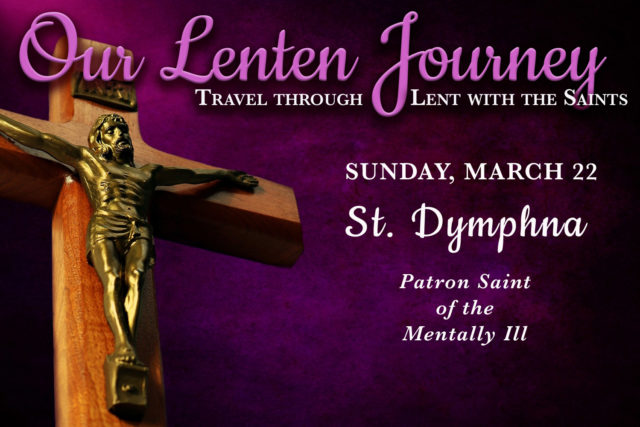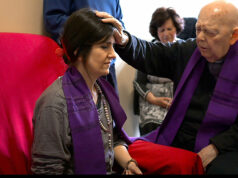You may have heard it said that St. Dymphna is the patron saint of the “insane.” But did you know the tragic circumstances that lead her to this distinction?
St. Dymphna was a beautiful princess who lived in seventh century Ireland. Her father, Damon, was a pagan and King of Oriel. Her mother was a Christian, and raised Dymphna in the faith. When she was 14, Dymphna took a vow of chastity, pledging to love only God.
Not too long afterwards, her mother died. In his grief, Damon had a nervous breakdown. Her mother was beautiful, and her father’s friends suggested that he remarry to heal his broken heart. Damon said that he would only do so if he found a wife as beautiful as Dymphna’s mother. He sent out his men to find a new bride, but they were unsuccessful. Unfortunately, in his broken mental state, he began to view his daughter, who strongly resembled her mother, as a potential mate and made plans to follow through on this obsession and marry her.

Dymphna was horrified by this, and escaped the castle with a few friends from court, including her friend and confessor, Father Gerebernus. Eventually, the group settled in Geel, Belgium. Dymphna became well known for her kindness. She used her riches to help the sick and established a hospital there.
Unfortunately, her father was able to trace her to Geel, and he and his men arrived to take Dymphna back to Ireland to force her to become his wife. She refused, and Father Gerebernus tried to intervene on her behalf. This angered Damon; he ordered Father Gerebernus be beheaded. Dymphna still refused to have any part of his twisted plan despite her friend’s violent death. In a fit of anger at her refusal, her father drew his sword and beheaded her as well.
The people of Geel took the bodies of Father Gerebernus and Dymphna and buried them in their town. Legend says that one night five people dealing with mental afflictions slept near their graves and woke up feeling mentally healed. The townspeople built a church near the graves in Dymphna’s honor, and over the years, so many pilgrims visited it in hopes of healing that the sanctuary was often overflowing.
In the 15th century, a new, larger church was built in the same place. In an interesting extension to the story, the people of Geel became known for helping out the mentally afflicted who came to their town, taking them in, calling them boarders instead of patients, and assisting them in their quest to become mentally healthy.
Dymphna and Father Gerebernus were both named saints in the Catholic Church. She is considered a martyr because she lost her life standing up against the sinful wishes of her father.
St. Dymphna’s feast day is May 15.
She is the patron of runaways, victims of incest, the mentally ill, those who suffer from epilepsy and other neurological conditions, and those who work in mental health professions.
Read more about the National Shrine of St. Dymphna in the United States here: https://natlshrinestdymphna.org/site/
Read the TripAdvisor review of St. Dymphna ‘s shrine in Belgium here: https://www.tripadvisor.com/Attraction_Review-g680682-d12193422-Reviews-St_Dymphna_Church-Geel_Antwerp_Province.html
Prayers to St. Dymphna can be found here: https://www.ourcatholicprayers.com/prayer-to-st-dymphna.html and here: http://www.prayerflowers.com/prayergarden/index.php?topic=276.0
Interesting article about Geel’s legacy of caring for the mentally ill: https://allthatsinteresting.com/geel-belgium-mental-illness








